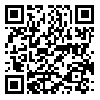BibTeX | RIS | EndNote | Medlars | ProCite | Reference Manager | RefWorks
Send citation to:
URL: http://jdc.tums.ac.ir/article-1-5496-en.html
2- Skin Diseases and Leishmaniasis Research Center, Alzahra Hospital, Isfahan University of Medical Sciences, Isfahan, Iran ,
Introduction: Tinea capitis is the most common skin infection on the scalp and an uncommon dermatophytosis in adults. Its clinical appearance varies greatly depending on the causative organism, the type of hair involvement and the extent of the patient inflammatory response. Its common features are fragmented hair loss with varying degrees of scaling and erythema. However, if the clinical symptoms are mild, the diagnosis can be challenging.
Case report: We report a case of tinea capitis in a 60-year-old woman who initially had few clinical symptoms and according to the biopsy result and the presence of fibrosis, lichenpilanopilaris (LPP) were diagnosed and she received related treatment with methotrexate and cyclosporine, but after 4 months, no response to treatment and exacerbation of symptoms were observed. Tinea capitis was diagnosed and the patient was given appropriate treatment.
Conclusion: Tinea capitis can imitate clinical features of lichenplanopilaris and mistreatment with corticosteroids can lead to extension of the disease.Received: 2021/03/15 | Accepted: 2021/01/29 | Published: 2021/01/29
| Rights and permissions | |
 |
This work is licensed under a Creative Commons Attribution-NonCommercial 4.0 International License. |





